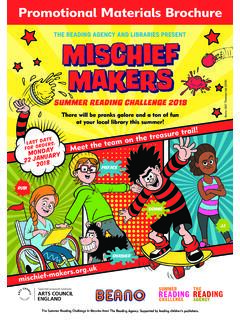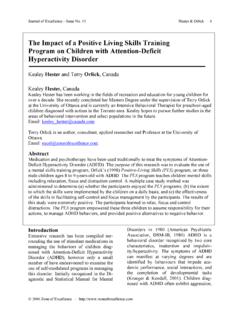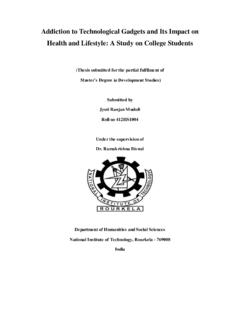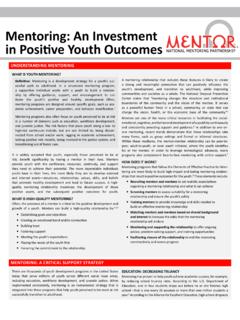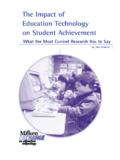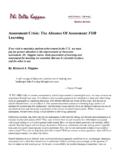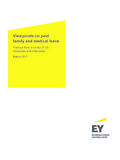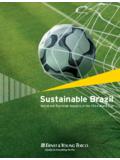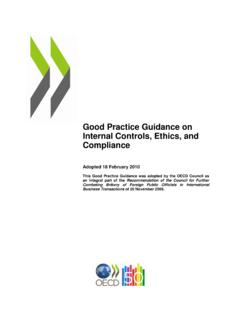Transcription of READING OUTCOMES FRAMEWORK TOOLKIT - …
1 READING OUTCOMES FRAMEWORK TOOLKITA TOOLKIT to help you understand, demonstrate and improve the impact of your activities to encourage READING for pleasure and empowermentClick to startREADING OUTCOMES FRAMEWORK TOOLKITA boutOutcomesQuestionsMethodsEvidencePart nersmoreIdentify your outcomesWhat are you trying to achieve and for whom?See section: OutcomesHow will you measure your desired OUTCOMES ?See section: QuestionsWhat sort of data will you collect? When will you measure? Who will you include?See section: MethodsDid you achieve the OUTCOMES ? How? What could be improved? How does this compare to what others have found?
2 See section: EvidenceChoose your measuresDesign the methodsDesign your tools (eg. survey) and collect the dataAnalyse & learnStep 1 Step 2 Step 3 Step 4 Step 5 Start with your evaluation question/s. What do you want to find out by doing an evaluation?1 This is a practical TOOLKIT to help evaluate activities that encourage READING for pleasure and empowerment. It includes: - a FRAMEWORK of OUTCOMES of READING for pleasure and empowerment - questions to evaluate whether a programme impacts on these OUTCOMES -a bank of evidence about how READING relates to these outcomesHow will it help me?
3 It will help you understand, demonstrate and improve the impact of your activity to encourage READING . It will support you to make the case for investment and advocate for READING , by outlining existing evidence about the OUTCOMES of READING and providing guidance about gathering evidence for the contribution your work makes to these OUTCOMES . It will strengthen evaluation methods across the READING do I use it?You use the TOOLKIT to plan and carry out evaluations. The diagram to the right takes you through the stages you will need to follow and further guidance is available on the following pages, including a practical example here.
4 Click More on the right-hand side to read is the READING OUTCOMES FRAMEWORK TOOLKIT ? READING OUTCOMES FRAMEWORK TOOLKITA boutOutcomesQuestionsMethodsEvidencePart nersmore2 How was it developed?The project is led by a collaborative steering group of organisations in the READING sector, in consultation with wider stakeholders. The process has been supported by research and evaluation experts at OPM and BOP is it for?It can be used by anyone working to encourage READING for pleasure and empowerment, for example in charities, libraries, schools, colleges, early years settings, family learning, prisons and do I navigate?
5 You click on the tabs at the top of the page to access the different sections. The OUTCOMES tab takes you to the READING OUTCOMES FRAMEWORK , with all key terms defined when you move your cursor over them. The methods tab takes you to guidance about doing impact evaluation, an introduction to some different methods (with external links to guidance from other organisations) and support to develop your own evaluation tools. The questions tab takes you to example questions that can be used to measure whether or not an activity has resulted in the OUTCOMES in the FRAMEWORK .
6 All the questions are from resources which are free to use and they are grouped by outcome area. The evidence tab takes you to research evidence that informed the development of the FRAMEWORK , providing short summaries and references to the full research. Within each section there are next and previous buttons to the right and left of the do the key terms mean?The TOOLKIT focuses on READING for pleasure and empowerment, which is READING as a way to spend time and for entertainment, or for self-cultivation and self-development. It is READING that takes place voluntarily; the reader chooses what or when to read.
7 It includes READING fiction, non-fiction, digital materials, print materials, picture books, comics, newspapers, magazines, listening to others read or to audio books and shared TOOLKIT helps you evaluate activities, which are programmes, initiatives, interventions or pieces of work that you carry out with a target group to encourage READING for pleasure and empowerment. Activities can focus on encouraging individuals to read or on shared READING (for example, parents or carers READING to children). Intermediaries such as practitioners or parents might be involved. prevREADING OUTCOMES FRAMEWORK TOOLKITA boutOutcomesQuestionsMethodsEvidencePart ners3 The FRAMEWORK maps OUTCOMES , which are the changes, benefits, learning or other effects that result from what a project or organisation may include changes in users knowledge, skills, attitudes, and behaviour (Creating your theory of change: NPC s practical guide, NPC, 2014).
8 The OUTCOMES in the FRAMEWORK are expressed in the positive, because there is existing evidence that READING can cause a positive impact in these areas. When evaluating activities you should be aware of negative changes as well. Not every READING activity will lead to every outcome you need to review your activity against the FRAMEWORK , selecting the relevant OUTCOMES and finding out if a change results from your the TOOLKIT focused on adults or children?The OUTCOMES FRAMEWORK has been developed from current evidence about the impact of READING for pleasure and empowerment on adults, parents/carers and children and young people, and for both confident and emerging readers.
9 However, there is not enough evidence to be sure if different OUTCOMES result for different groups, or from different types of READING . The evidence section shows where the existing evidence comes from, and where there are gaps in evidence. Over time, we hope to increase the evidence base as the FRAMEWORK is used across the READING sector. The TOOLKIT includes questions that can be used with adults, parents & carers and children / young people. You will need to select questions that are appropriate for your target audience and icons have been included to help you do this. You may also want to evaluate the impact of your activity on the practitioners or volunteers that deliver it, but that is beyond the scope of this developed the FRAMEWORK ?
10 The FRAMEWORK has been developed as a partnership project led by The READING Agency. All core partners are listed in the partners section. The project is funded by the Peter Sowerby Foundation: we are very grateful for their support, without which this project would not have been the toolkitIf you would like to reference the TOOLKIT , please use the following text: The READING Agency et al (2016) READING OUTCOMES FRAMEWORK TOOLKIT , London: The READING AgencyWhere next?Use the tabs above to explore the different OUTCOMES FRAMEWORK TOOLKITA boutOutcomesQuestionsMethodsEvidencePart ners4 DefinitionsActivity to encourage READING for pleasure and empowermentThis activity results in positive impact on one or more of the following READING engagement outcomesIncreased READING engagement can have a positive impact on the following OUTCOMES for individualsSuccess in achieving these OUTCOMES contributes to wider positive impact in the following areasReading engagement outcomesAttitudes to readingAwareness of READING preferences & how to choose what
